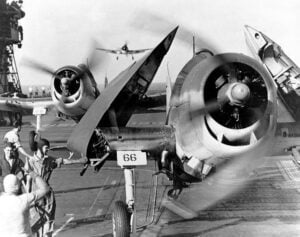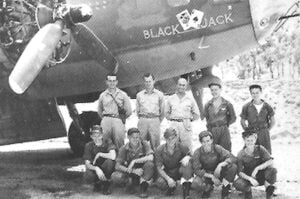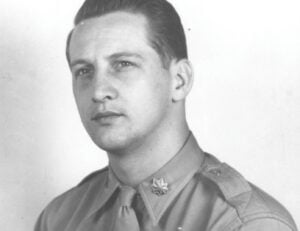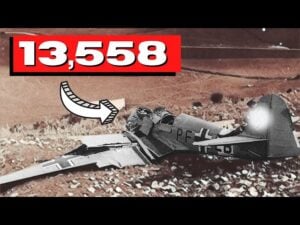America’s Prop Monster No Jet Could Kill
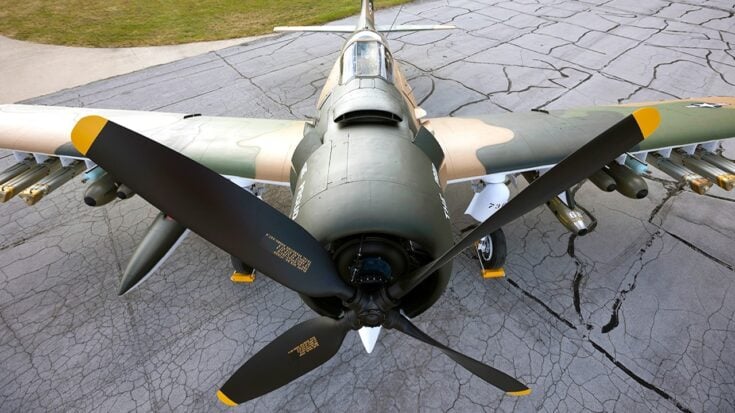
YouTube / Dark Skies
On June 20, 1965, the sky over North Vietnam turned into a scene no one expected. A pair of MiG-17s, fresh from downing an American F-4 Phantom, prowled the skies for more kills. Instead of supersonic jets, what emerged through the clouds were four Douglas A-1 Skyraiders—straight-winged relics from another era. Slow, loud, and loaded down with ordnance, they looked like sitting ducks. But that night, the MiGs would learn that this piston-powered brute had teeth.
Born Too Late—And Just in Time
The A-1 Skyraider’s story began in 1944, designed by Ed Heinemann as a rugged single-seat attack aircraft built around the massive Wright R-3350 engine. Too late for World War II, the big “Spad,” as it was nicknamed, entered service during the Korean War. Its long range, heavy payload, and uncanny accuracy made it invaluable for close support. Skyraiders hit rail yards, bridges, and even dropped torpedoes into reservoirs under fire. Big, slow, and vulnerable on paper, it proved nearly unstoppable in the hands of skilled pilots.
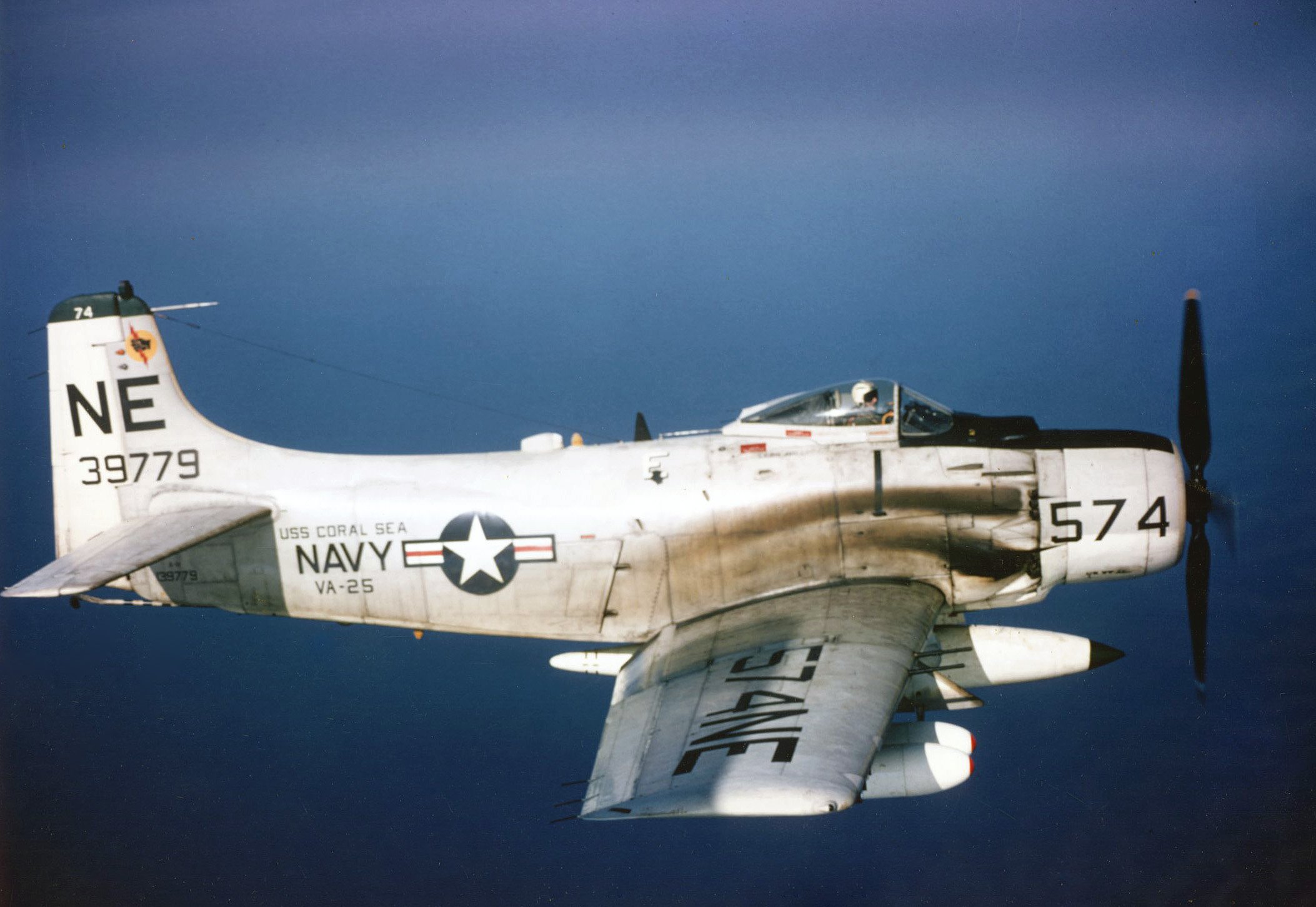
The Spad in Vietnam
By the 1960s, the jet age had made the Skyraider look like an anachronism. Yet in Vietnam, where endurance, precision, and firepower mattered more than speed, it became indispensable. With four 20mm cannons and up to 8,000 pounds of ordnance, the Skyraider could loiter over battlefields for hours—something jets couldn’t match. It became the U.S. military’s workhorse for close air support and combat search-and-rescue, flying under the famous call sign “Sandy.”
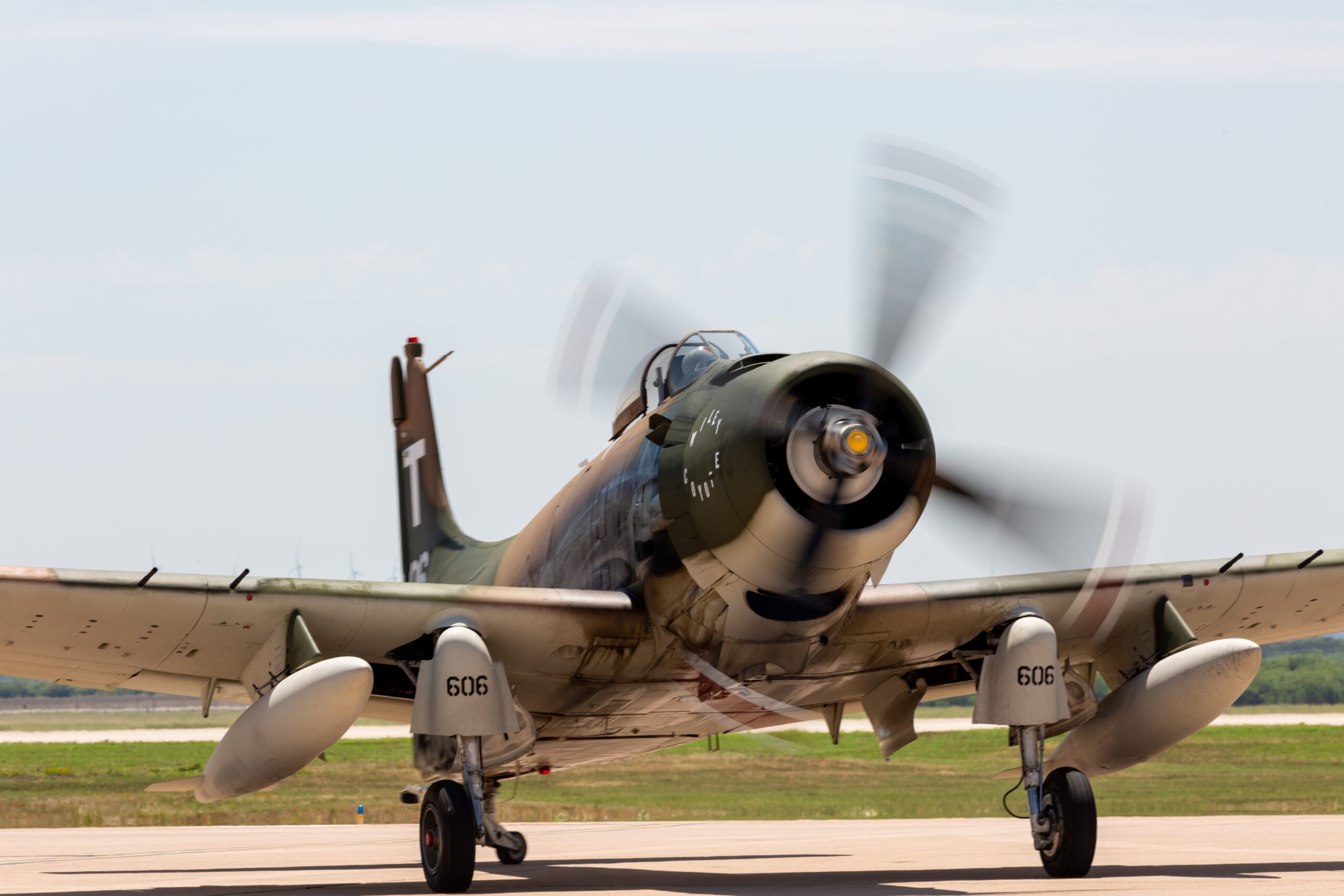
When Props Took Down Jets
That June evening in 1965, four Skyraiders launched from USS Midway to cover a downed Phantom crew. Diving into hostile territory, they were jumped by MiG-17s. Lieutenant Clinton Johnson’s Skyraider was targeted, but he yanked his Spad into a brutal turn. The MiG overshot, unable to follow. Seconds later, Johnson and his wingman opened fire, shattering a MiG and sending it into the hillside in flames. Against all odds, a World War II-era prop plane had just killed a jet.
It wasn’t the only time. In October 1966, another Skyraider pilot, Lieutenant Junior Grade Tom Patton, downed a MiG with cannons and Zuni rockets—marking the last air-to-air victory by a prop-driven fighter in history.
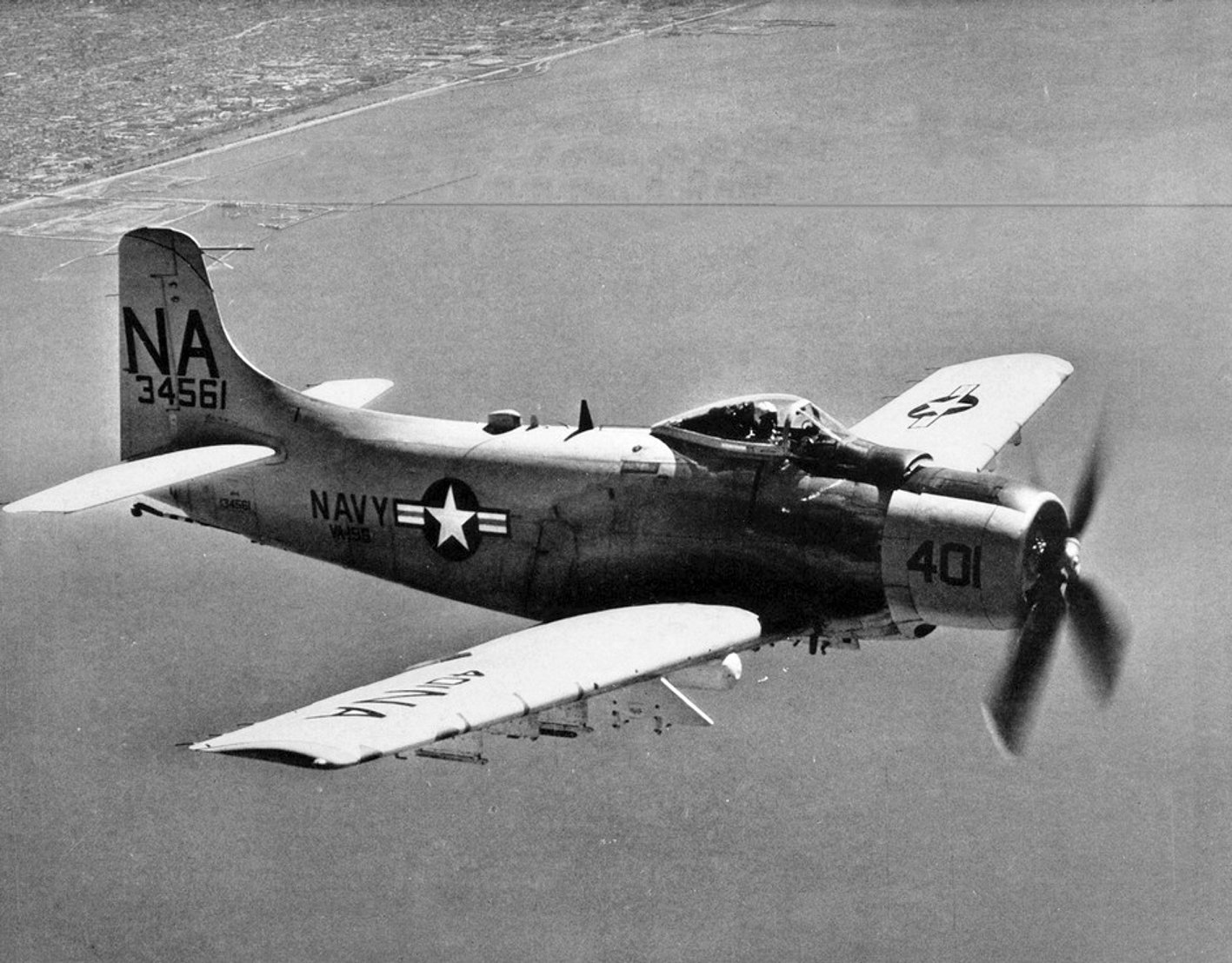
A Hero’s Machine
The Skyraider became legendary not only for its kills, but for its rescues. Pilots flying Sandy missions braved walls of flak to protect helicopters pulling men from the jungle. In 1966, Major Bernie Fisher landed his Skyraider under fire to rescue a fellow pilot from an overrun airstrip, earning the Medal of Honor. For downed crews, the throaty roar of a Skyraider meant survival.
The Legacy of the Skyraider
By the late 1960s, jets like the A-6 Intruder and A-7 Corsair II replaced the Spad. Yet the Skyraider’s reputation endured. Built in over 3,000 variants, it served the U.S. Navy, Marines, Air Force, and allies across the world—from Korea to Algeria and Vietnam.
In an era when jets ruled the skies, the A-1 Skyraider proved that raw endurance, firepower, and toughness could still win battles. America’s “prop monster” fought for nearly three decades, and no jet could ever quite kill it.














